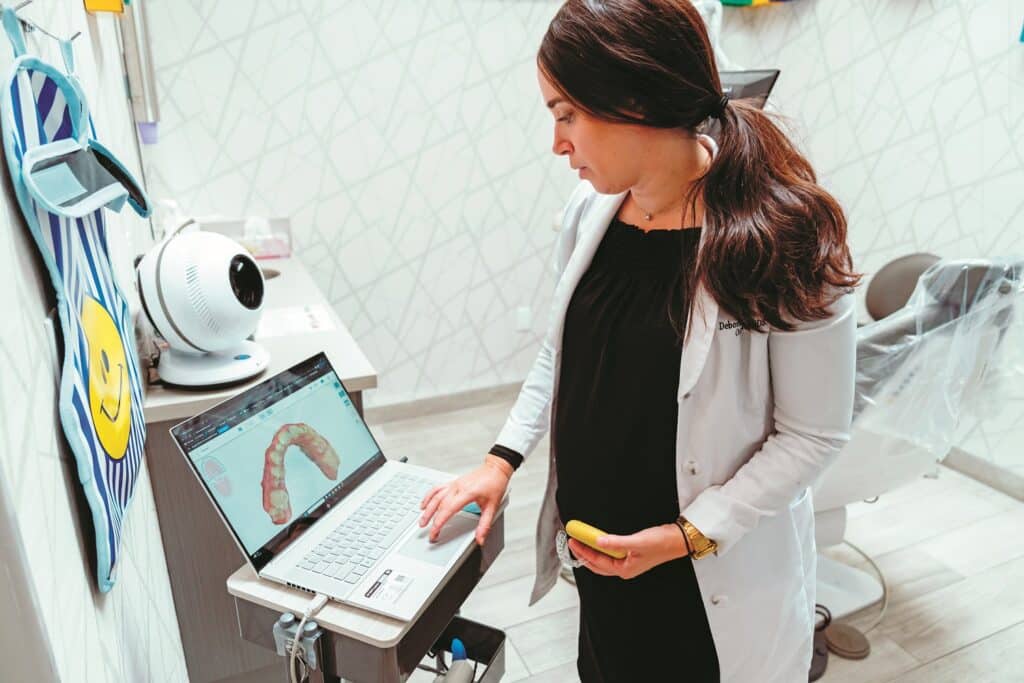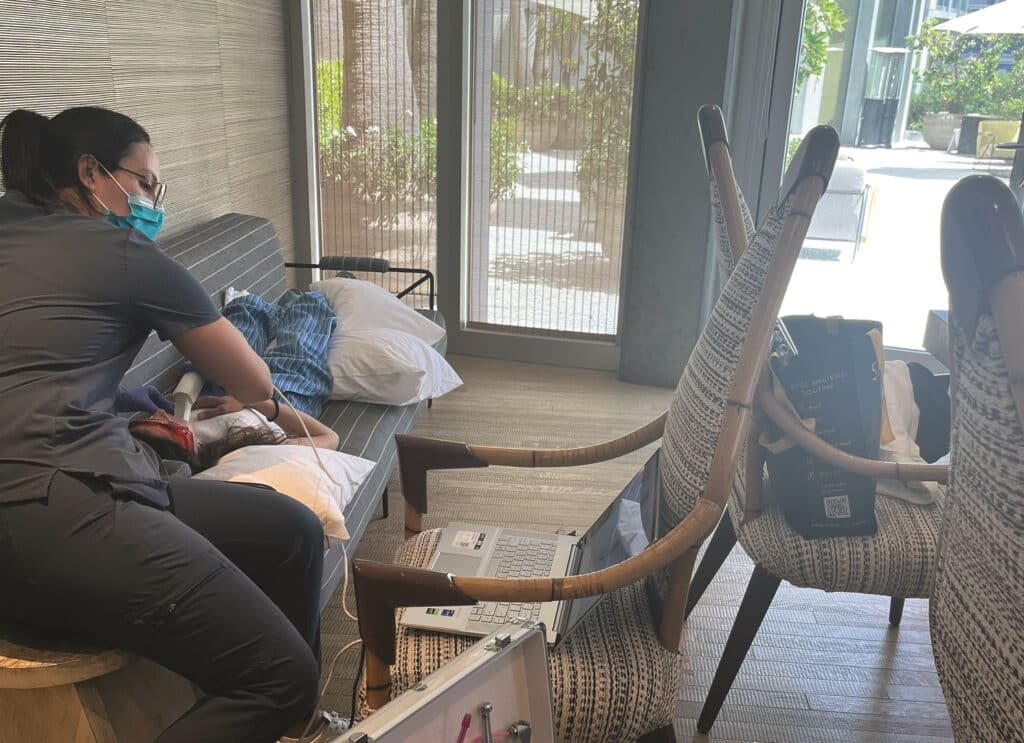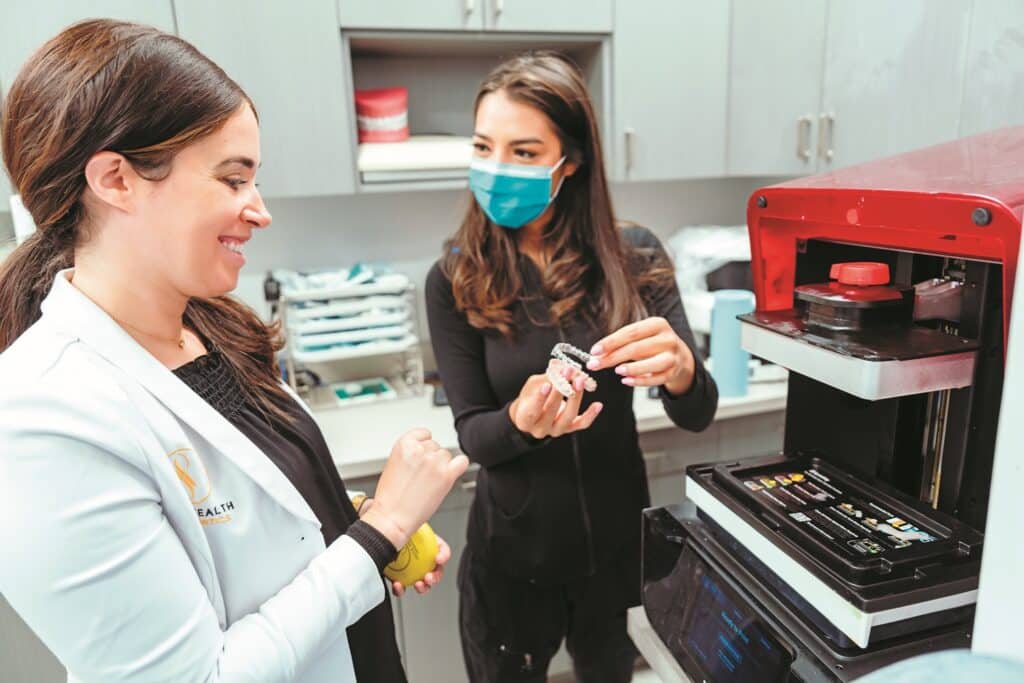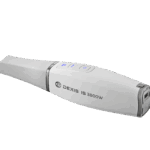Deborah Solomon, DDS, offers her Beverly Hills patients an at-home concierge service and uses the uLab Systems aligner platform to make it profitable.
By Greg Thompson | Photography by Vince Taroc
Deborah Solomon, DDS, the owner of Smile Health Orthodontics, with offices in Beverly Hills and Los Angeles, knew it would take work and creativity to have her orthodontic practice stand out. And she’s been willing to go the extra mile to do so.
An American citizen born abroad, Solomon grew up along the banks of the Rhine River in Strasbourg, France, before heading to New York for college. After a stint at Brooklyn College, she earned a spot at New York University College of Dentistry.
Initially, practicing general restorative dentistry was satisfying, but her own positive orthodontic experience back in Strasbourg planted the idea that orthodontics was the ultimate goal. Needing financial help to pay for dental school and an eventual orthodontic program, and wanting to serve her country, Solomon enlisted in the U.S. Air Force, where she served for 3 years at McGuire Air Force Base, NJ, as a general dentist. From there, she went on to complete her orthodontic residency at Roseman University of Health Sciences.
During her enlistment she went the extra mile, conducting a research study that dovetailed with her interest in orthodontics. The study, which eventually was published in the journal of the Academy of General Dentistry, looked at a question that had long interested her: If you think your teeth are nice, will you be more inclined to take better care of them?
Her research found a statistically significant correlation between better oral hygiene and teeth that were deemed “attractive and aligned.”
When it came time to start her own orthodontic practice Solomon at first operated out of a general dentist’s office in Beverly Hills. Soon after she was approached by a pediatric dentist with an office in Los Angeles, one that was only 12 minutes from her Beverly Hills location. “That Los Angeles office eventually became my main location, and the Beverly Hills office became the satellite,” she says.

How to make a concierge practice work
In the hyper competitive Southern California market, Solomon differentiated her practice with a concierge element, offering house calls for orthodontic treatment. But it was also a means to an end during the pandemic. “The city of Beverly Hills had stricter rules than the city of Los Angeles where orthodontists were not allowed to see patients in-person in those early days,” she remembers.
To keep seeing patients in her boutique practice, Solomon took advantage of the fact that she had an iTero Flex intraoral scanner from Align Technology and a portable dental unit, and hit the road. What was a way to provide continuity of care during the pandemic has today become an option for patients who are immunocompromised or who have anxiety around orthodontics, and for those who just want the convenience.
As Solomon describes it, the visit will often begin with a conversation on the living room couch and then move to an intraoral scan. As trust builds, she starts the exam and treatment options are discussed. Patients can then decide if they want to receive the full course of treatment at home via the concierge service, or come to the office after their initial at-home visit.
While patients in this part of southern California are often willing to pay more for these personalized extras, Solomon still has to make sure that they make financial sense for her practice. After all, closing the office to make a house call is “very, very expensive,” she says.
One way she does this is by using DentalMonitoring’s platform to track patients between visits. As she puts it, “If you do concierge, you’ve got to go with DentalMonitoring.” She also relies on the responsiveness of her clear aligner company of choice to allow her to treat the way she wants to treat in both patients’ homes and in the office.
Like many orthodontists, Solomon developed a relationship with one aligner brand when she started practicing, relying on the company to meet her clinical needs at a reasonable cost. But then things changed.
“Last year their turnaround time was not good,” she shares. “They became really busy and I couldn’t get my aligners on time. For my Phase 1, it’s a big problem to wait 6 weeks for an aligner. I told the rep, ‘You have to help me, because that’s too much time.’ I finally said, ‘I’m really sorry, and I hate severing ties, but the turnaround time is unacceptable.’”
About this time, Solomon, who is a proponent of Phase 1 aligner cases and treats most of her mixed dentition patients with aligners, called back a rep from uLab Systems, the Memphis, Tenn-based maker of digital treatment planning software and aligner products, who had previously reached out to her. What first got Solomon’s attention? “They actually listened to me,” she says.
She found costs to be reasonable and the company offered an option to pay extra for expedited tray delivery, receiving them in about a week. “It’s not inexpensive, but for a lot of my cases, it’s worth it for me,” she says.
When it came to the clinical difference, Solomon liked that uLab’s uSmile aligner system provided a solution to avoid refinements every time a loose or uncomfortable tooth came up. “Now it doesn’t hurt to actually wear your aligner for my little patients who are in mixed dentition, so to me that’s a game changer,” Solomon says. “That means fewer refinements on my Phase 1s.”
Since uSmile aligners can be purchased à la carte, Solomon offers try-before-you-commit aligners for patients (or parents) who are not sure they will wear the aligners. Since she does not commit to a comprehensive case fee, she can switch them to braces at no additional charge in the event of a compliance issue. In addition, while uLab’s treatment planning platform gives her the digital tools to control and plan her aligner cases herself, she can turn to uAssist, the company’s rapid treatment planning service during busy times. Solomon says she particularly appreciates that if she receives a treatment plan that needs a minor change, she can quickly alter it herself with no back and forth.
“Responsiveness is another aspect of uLab that I really appreciate,” Solomon says. “They listen to their customers. Features that I request are added to the platform, such as eruption domes, and that is important due to my high number of Phase 1 aligner cases. My regional sales manager responds quickly, and that rapid, reliable turnaround time for aligner delivery is important, because my patients are demanding.”

An insurance plan to protect patient smiles
To ensure that treatment results last, Solomon implemented a retainers insurance program into her practice earlier this year. She prefers removable retainers over permanent options, because, as she puts it, the latter “are only holding the anterior surfaces together, so the posterior segments can collapse…and these permanent retainers can lead to difficulty with flossing under the wire and further periodontal issues.”
Knowing that removable retainers are prone to getting lost, getting chewed by pets, or getting left in the car where the heat can distort them, Solomon set out to offer an affordable program that provides patients with retainer replacements as needed. The retainer insurance program is offered to patients during their initial consultation, with the treatment coordinator providing a fee breakdown. “We currently charge $700 up front for the program when patients sign up for orthodontic treatment,” she explains. “If they opt out, it’s totally fine. However, if they want to opt in after treatment is completed, it is double the price at $1,400, which is still a good value.”
As Solomon puts it, “No patient starts treatment without understanding that you need to wear retainers after.”
If patients enrolled in the program do lose their retainers, they need only to call up Smile Health Orthodontics and pay the $50 copayment to get a replacement retainer.

Art and science and “attractive and aligned” smiles
Solomon is not one to jump on the latest technology without weighing the pros and cons. But when she finds those technological advancements—like cone beam computed tomography (CBCT) or Brava by Brius, the lingual NiTi appliance that combines the biomechanics of braces and the aesthetics of aligners—that just make sense, she’s in.
With two children and another on the way, Solomon uses technology to save time and hone a clinical efficiency that has spawned excellent outcomes. “I have always believed in technology because I found my husband online,” she says with a chuckle. “I would have been nowhere if not for technology. [It’s] so powerful. I came across an orthodontist who rarely used CBCT and I asked, ‘How are you practicing without CBCT in today’s world?’”
And when it came time to use Brava by Brius, she was impressed by the fact that she could treat patients in half the time with a lingual aesthetic option. “I’m not going to use something just to try it,” she says. “When I first used Brava by Brius, it coincided with the case of a patient who had just asked me about lingual braces. It was perfect timing and it was the best option.”
Like many orthodontists, Solomon loves the moments when art and science combine to give patients the “attractive and aligned” smiles that not only lead to better oral health, as she found early in her career with that study, but also improve patients emotional health. She sums it up this way: “Kids see that their teeth are getting nicer and all of a sudden they are smiling and laughing and becoming more confident. You can also take a patient with pain, a bad bite, or an impacted tooth, and you’re able to fix it and be the hero.”
“If you take a step back and look at the before-and-after photos, you realize that we make a big difference,” she adds. “You get to make people beautiful, and you get to have fun with it. It’s a very rewarding profession.” OP
Greg Thompson is a contributing writer for Orthodontic Products.










